No products in the cart.
When we talk of crape myrtle, we talk of something colorful. This summer-blooming outdoor plant is highly admired for its pretty ruffled flowers in various colors like bright pink, red, white, and lavender or purple. Imagine a crumpled crepe paper and that’s how the flowers look like.
Hence, others call it crepe myrtle instead of crape myrtle. Both names are acceptable.
Crape myrtles are used to grow as small trees once they reach a mature size, occupying large portions in a garden. Thanks to our breeders because dwarf varieties are now available. That means you could enjoy the beauty of their bright flower colors without worrying so much about space.
But wait, there’s more. We have some detailed information about dwarf crape myrtles below. So, keep reading.
More About Dwarf Crape Myrtles
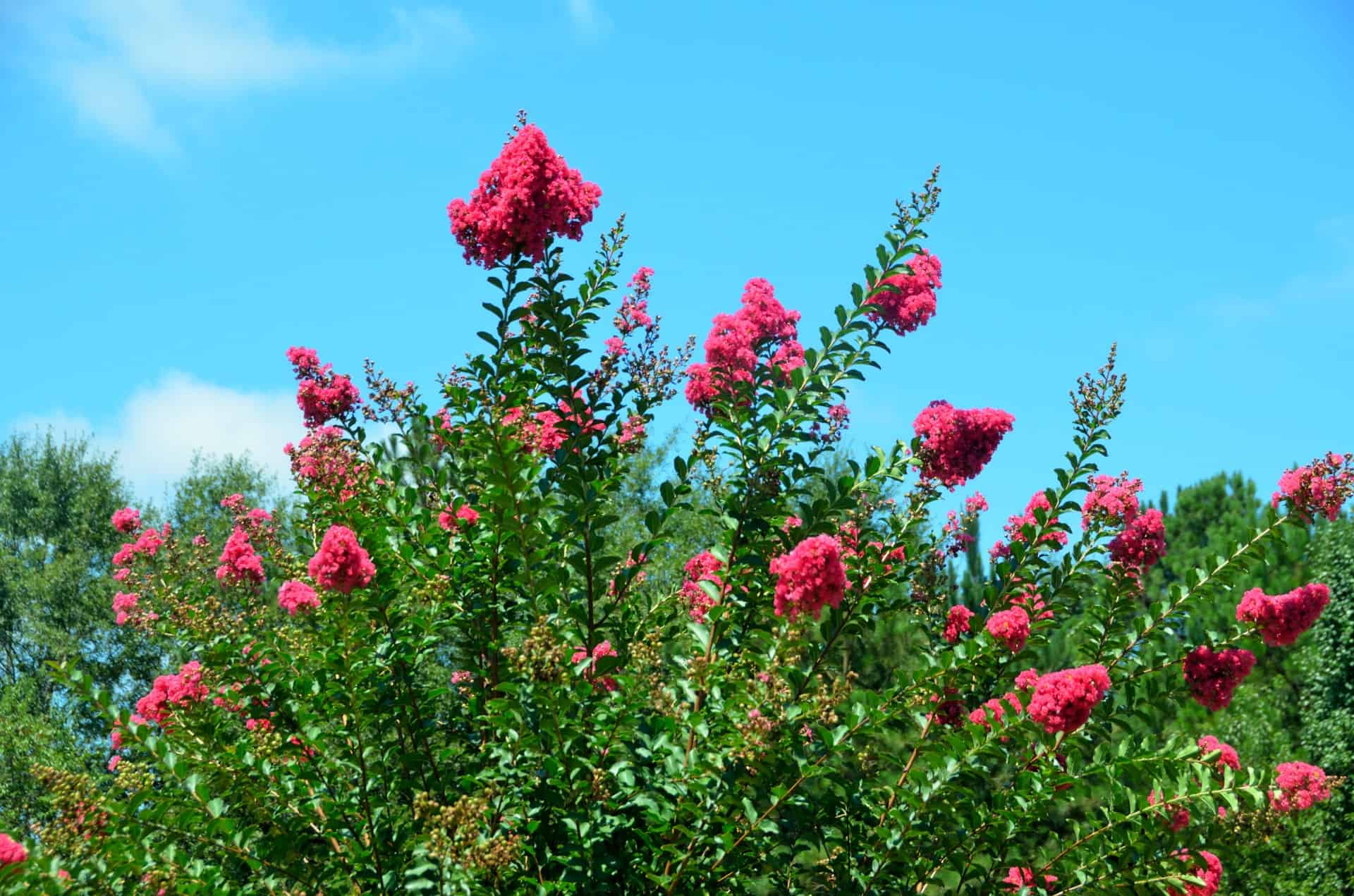
Crape myrtle trees have been existing for quite a long time already, adding colors and beauty to many gardens with their showy blooms. Its origin can be traced back to Southeast Asia. Crape myrtle is a member of the Lythraceae family and it goes by the scientific name, Lagerstroemia indica.
With the consistent effort to have crape myrtle shrubs more suitable for small gardens, breeders were able to produce dwarf varieties of crape myrtles. Hence, there are cultivars of crape myrtles that grow less than 4 feet tall which is significantly smaller than the usual 15 to 25 feet height of a common crape myrtle tree.
The overall appearance of dwarf crape myrtles includes having a dense and spreading form. It can be a multi-stemmed or single trunk with a thin peeling bark that exfoliates to reveal the smoother layer below. The leaves are dark green which can be pretty dull when the flowers aren’t there.
However, the foliage color turns red, yellow, or orange during the fall season.
Bloom production starts in July and through September, which sometimes extends until the first frost. Such a long blooming season allows gardeners to enjoy a summer-long period of colorful crepe myrtles up until the fall season.
You can plant indoors in smaller varieties of crepe myrtles in large containers, on an open lawn and patio, and even in small spaces. Depending on your landscape theme, you have the choice to plant them in groups or individually as an accent.
Dwarf Crape Myrtle Care Guide
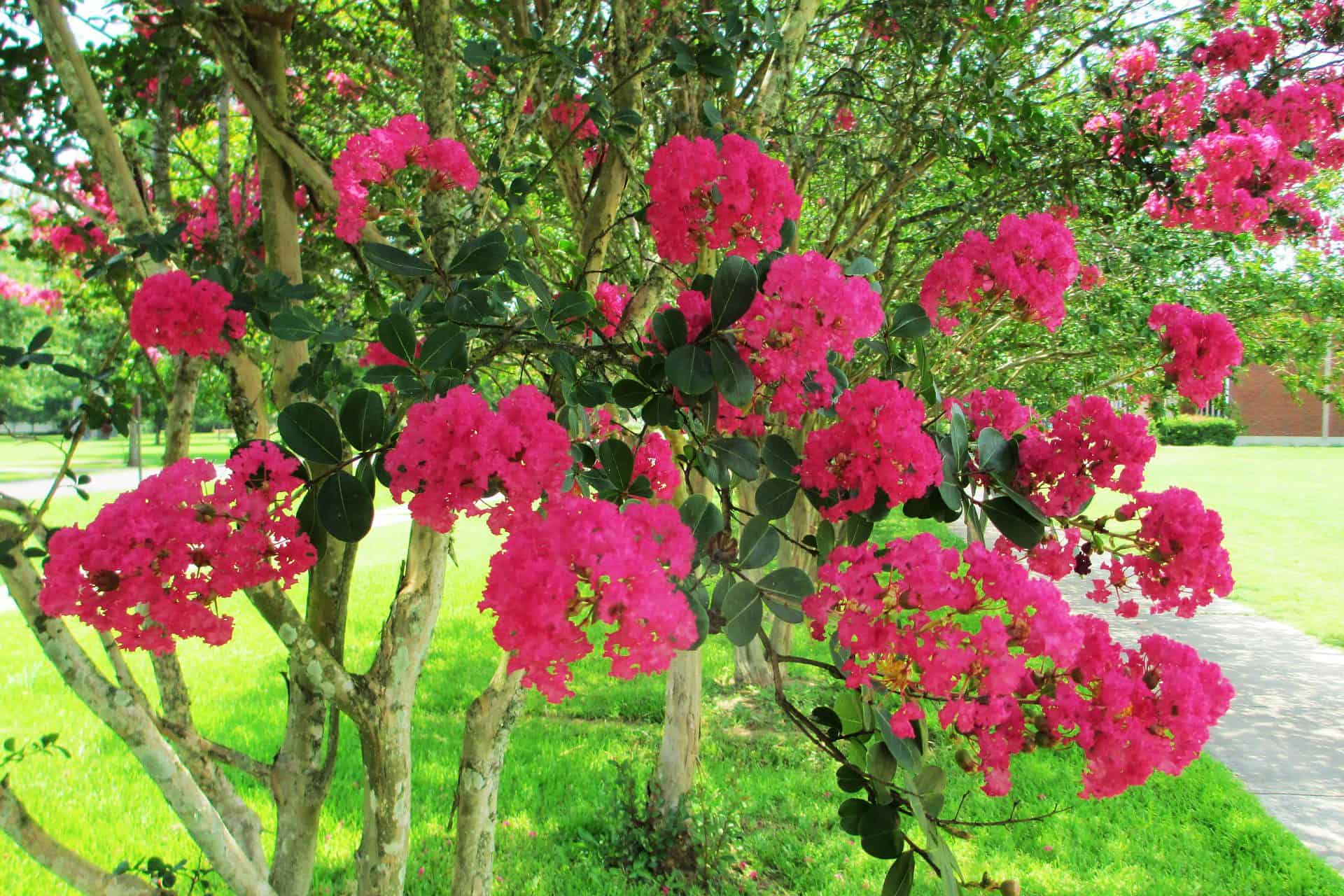
Crepe myrtles require a medium level of care and maintenance. There are specific cultural conditions to follow and maintain to keep it thriving and happy in its growing environment.
Soil
A well-drained soil that has a clay, loam (silt) and sand texture will be suited for growing crepe myrtle. It may grow in any soil pH but slightly acidic soil is much preferred for best growth.
A too-alkaline soil may lead to the yellowing of leaves so better do away with that.
Crepe myrtle also prefers to have its soil occasionally dry because of its drought tolerance characteristic. Make sure it has good drainage to prevent root rot.
Light
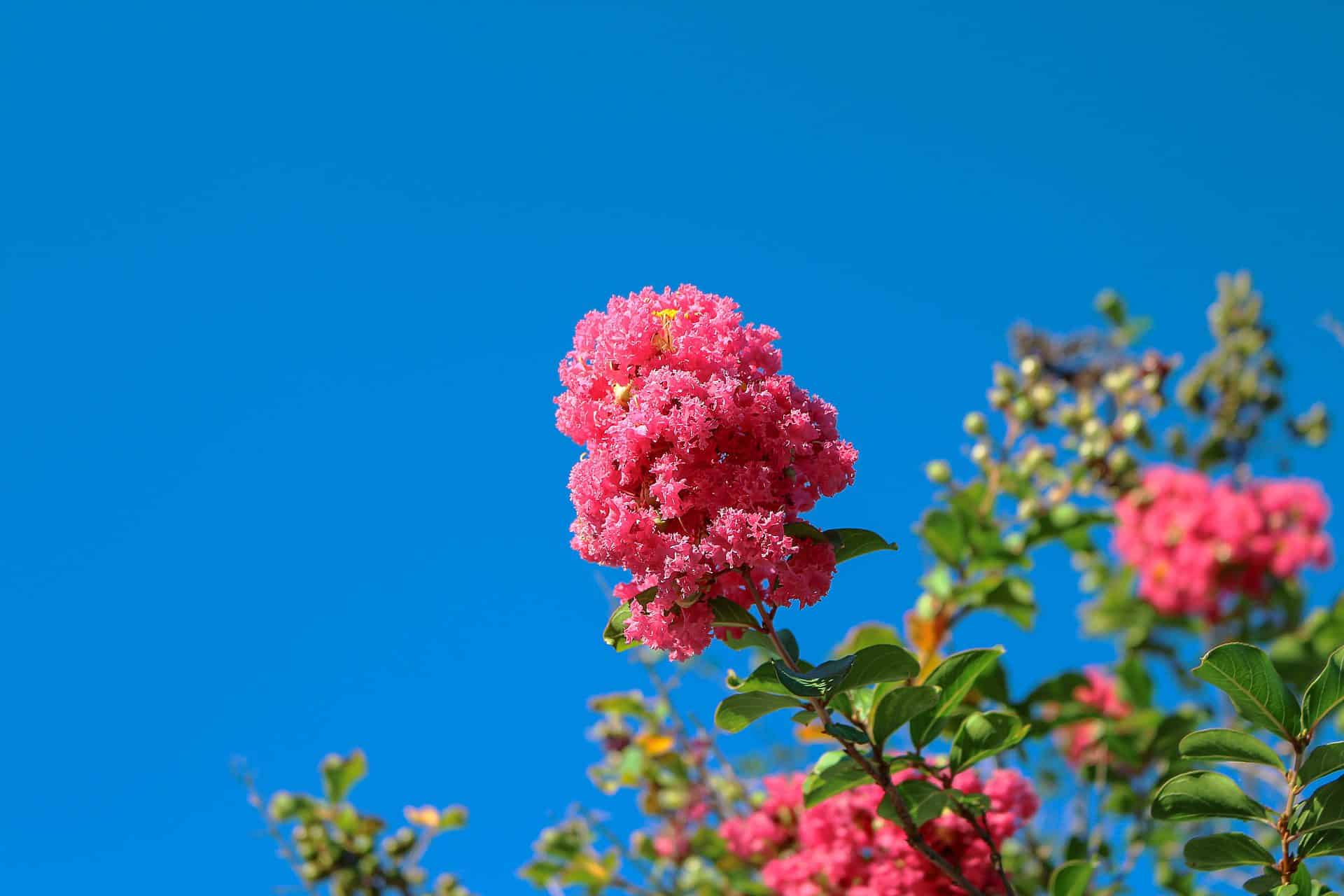
The best light condition for growing crepe myrtles is full sun. That’s why they grow fully well in an outdoor garden where they receive full sunlight for at least 6 hours each day. Don’t plant it under larger plants because it may block the majority of the light.
More sun leads to more blooms.
Water
Because crape myrtles are fairly drought-tolerant when established, they won’t require too much water. Allow the few top inches to go dry before watering again, especially if it’s potted. But when you water, make sure to do it deeply to reach the roots down below.
Temperature & Humidity
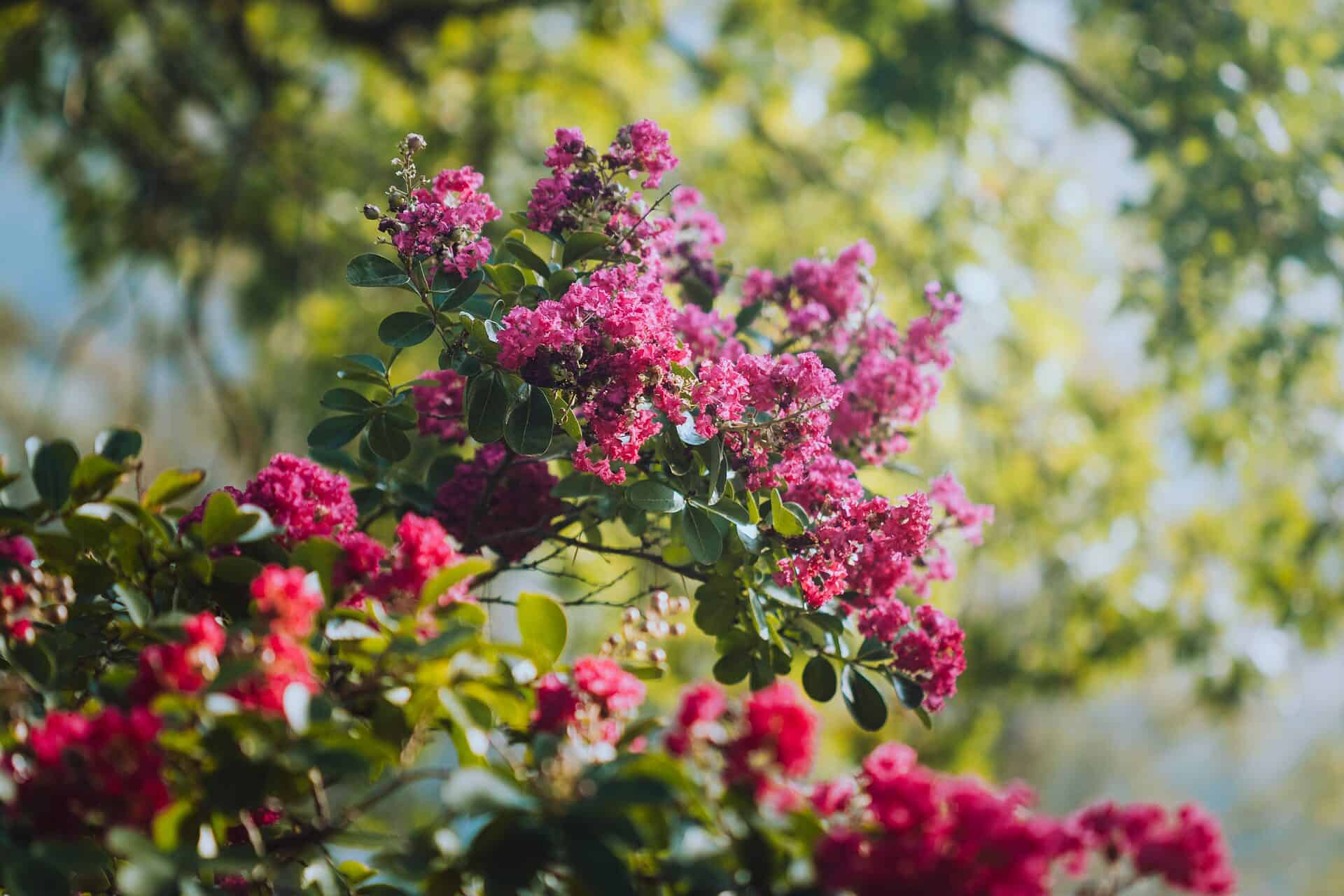
USDA hardiness zones 7 to 9a provide a favorable climate for growing crepe myrtle. During winter, you can protect the roots underground by putting mulch at the base. Your crepe myrtle will be in danger of dying back if the temperature goes below -5°F (-20.56°C).
So, it’s better to prune the branches before this happens. Don’t worry because once new wood arrives in Spring, blooms will also come out.
Fertilizer
You can lightly fertilize the soil once a month during the growing season as this is the period when they need it the most. Application of slow-release fertilizer is most recommended when the shrubs are already established. Water the soil well after fertilization.
Propagation
Take semi-hardwood cuttings during the growing season containing three to four nodes with a few leaves. Allow these cuttings to root in a rooting medium for about 3 to 4 weeks. Make sure to keep the soil moist.
Cover the upper portion of the cuttings covered in plastic to maintain high humidity. This practice will prevent the drying out of the cuttings. Place it under shade until new growths arise.
Pruning
To encourage vigorous foliage growth and better bloom production the next season, it’s better to prune the crape myrtle in late winter or early spring. For dwarf crape myrtles, pruning will entail thinning out branches to prevent crowding as well as the removal of dried and diseased branches.
Pruning the tip of spent blooms during the growing season is also a great idea as this will encourage second blooming. Beware of over-pruning your crape myrtle because this will force the plant to focus on growing foliage which will reduce blooming.
Potting

It’s possible to grow crape myrtle in a container such as a pot. Choose a container that’s large enough to accommodate the root ball of your crape myrtle. Check if it has enough drainage holes and if not, dig more holes to add.
Fill it in with garden soil and amendments such as perlite and bark. This is to improve the drainage of the potting soil.
Carefully pot the crape myrtle, making sure the roots are intact. Add layers of potting soil to fill in spaces. The root ball should be just an inch below the top soil layer. Don’t plant it too deeply. Water the potted crape myrtle thoroughly.
Dwarf Crape Myrtle Varieties
Lagerstroemia indica ‘Infinitini Watermelon’
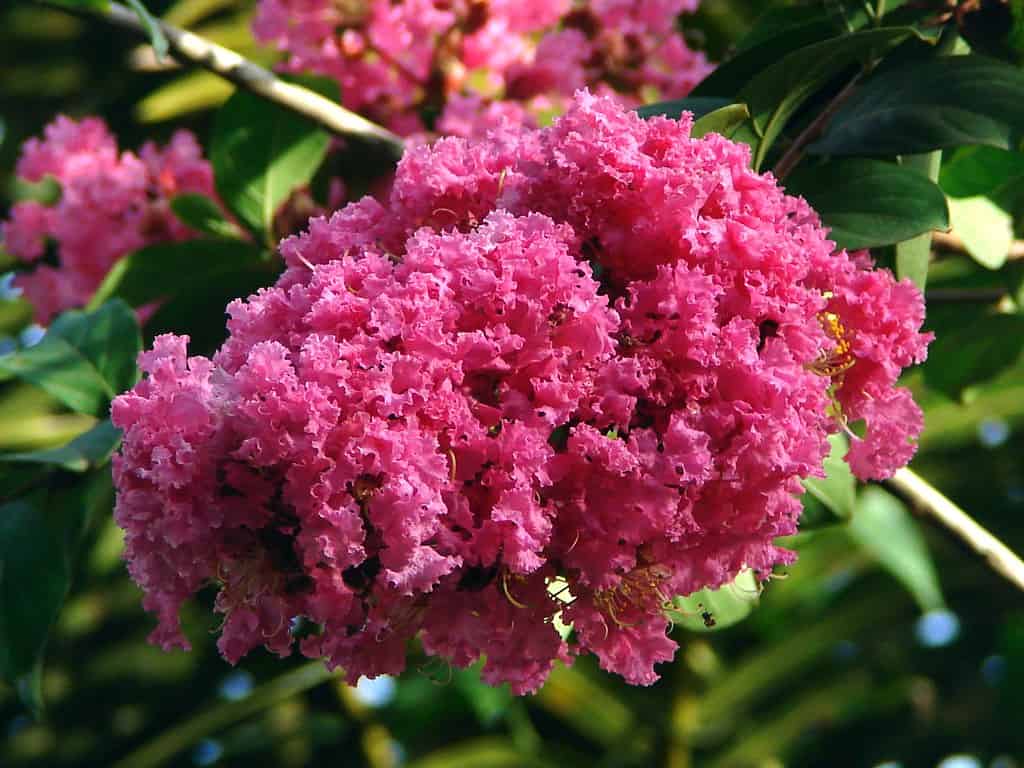
This variety is a dwarf version of crape myrtle as it grows a height of 2 to 4 feet tall only. The flowers are watermelon-pink in color but are also available in magenta, purple, and white.
Lagerstroemia indica ‘Rikki Tikki Pink’
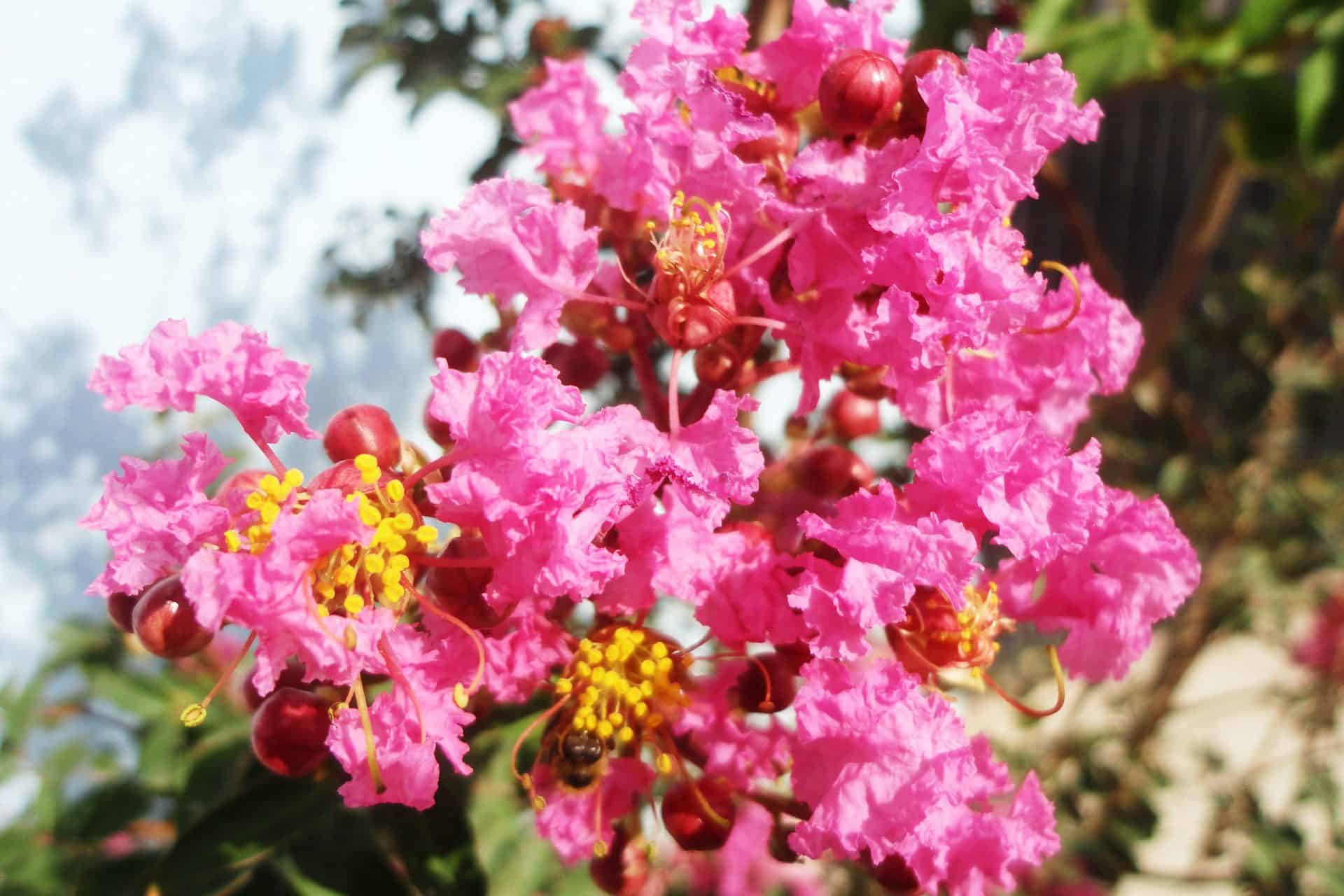
Rikki Tikki Pink is also among the smaller varieties of crape myrtle having an average height of 3 to 5 feet tall. It has bright pink flowers while its foliage is a combination of green, purple, and silver.
Lagerstroemia indica ‘Pocomoke’

Pocomoke is a great crape myrtle shrub variety suited for potting. Its average height reaches about 3 to 5 inches. The flowers are bright pink and the foliage is deep green.
Dwarf Crape Myrtle Common Diseases & Pests
Crape myrtle is susceptible to common fungal infections such as powdery mildew, fungal leaf spot, and sooty mold. You can use a general fungicide to keep them at bay. But it’s also important to remove diseased parts so they won’t spread to other plants.
Make sure to also provide proper spacing in the garden and practice cleaning and thinning out your plants.
Aphids and scales are the common pests that crape myrtle needs to deal with. However, it’s rare for these pests to cause heavy damage to the plant.
Frequently Asked Questions
There are many different colors of crape myrtle flowers including shades of pink, white, red, lavender, and purple.
Dwarf crape myrtles often grow an average size of 3 to 6 feet tall.
An outdoor space that has access to full sun is the best spot for growing crape myrtle shrubs.
It’s your choice. You can cut the dead blooms to encourage reflowering but you can also leave them there to save time and energy.
Check out this crape myrtle Muskogee from our partner nursery here at Plantly marketplace.
Whether you want to buy, sell or simply reach out to other plant enthusiasts, Plantly is the right place to be!


